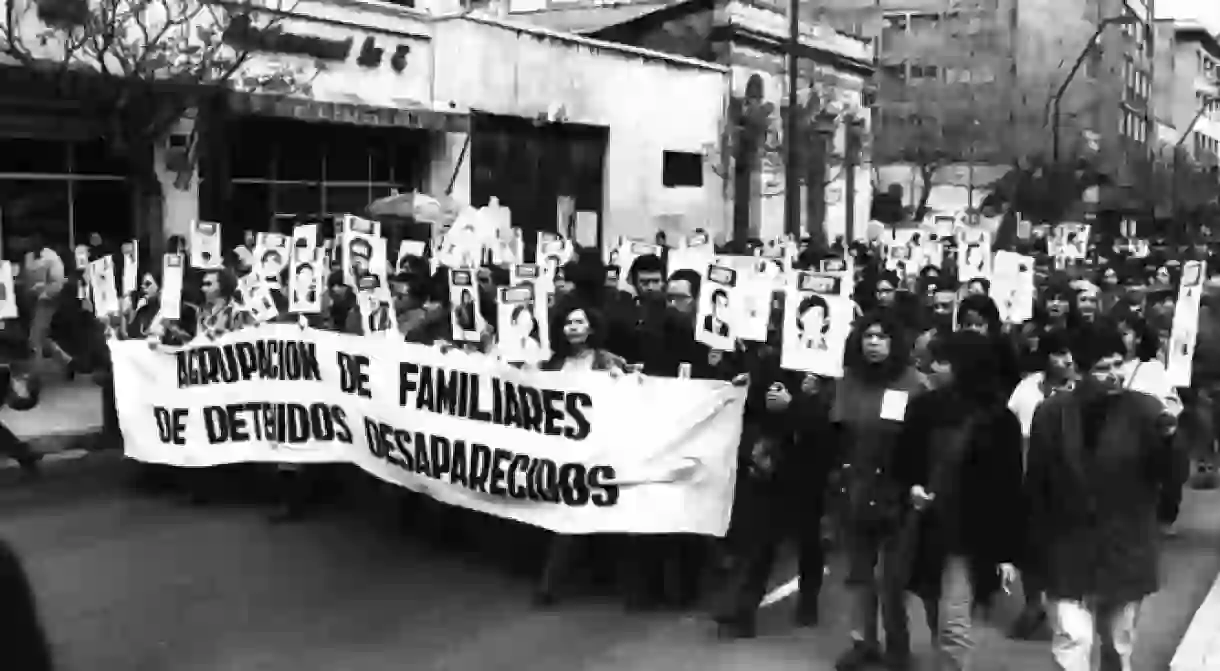The Mothers of la Plaza de Mayo

Claire Sessions explores the darker passages of the history of Argentina, a country she has been infatuated with for many years.

I fell in love with Argentina when I visited in 2004. I was 18, on a gap year working and travelling around South America and it was the last place I visited before heading back to my hometown of Sydney, Australia.
I’m not sure exactly what it was that made me love it as much as I did. Argentina, while certainly being different enough from Australia to hold my attention, was more western and developed than the other countries in South America I had visited. I didn’t stand out as much as I had, people didn’t stare at me when I walked down the street and I found it oddly comfortable. I even loved the iconic ‘sha’ that is the classic giveaway of an Argentinian accent.
In terms of its natural beauty Iguazu Falls is as spectacular as any natural wonder I’ve seen and the mountains in Mendoza are stunning. It brims with culture; it is the birthplace of Tango and I can’t think of a more pleasant way to spend a Sunday than watching street performances while browsing antiques, art and jewellery at San Telmo markets in Buenos Aires. Also, if you haven’t eaten a steak in Argentina, you don’t really know what steak can be. Argentina was the jewel of my South American experience and I still get excited when I meet an Argentinian person.
Over the years since I visited Argentina, as I’ve looked back, I think my memories and experiences might have been romanticised. My parents, partly due to my ravings, spent three weeks in Argentina in January 2010. While they definitely enjoyed it they saw a lot more cracks than I remember being aware of.
In September I was living and studying in Spain and two of my flatmates, who come from Liverpool, had been on a university exchange in Buenos Aires. Both had come home early due to bouts of extremely bad luck. They had been robbed and mugged and one of them saw their landlord get shot. They became very savvy at wielding the phrase, ‘No me jodas!’ or ‘Don’t fuck with me!’ They had a difficult time and are still quite shaken up.
Argentina is a country that has a complex and difficult past. Every Thursday afternoon in la Plaza de Mayo in central Buenos Aires a group of women congregate wearing white scarves of remembrance on their heads. They meet because of ‘the dirty war’ that gripped the country from 1976-1983.

On a continent all too familiar with brutal dictatorships the dirty war is a horrifying thing to read about and one can only imagine how it would be to have lived through. The name ‘The dirty war’ was coined by the military Junta itself and comes from the methods that were used to maintain the societal order the Junta saw as necessary. These methods were the use of widespread torture and rape against those who were openly opposed to the Junta which was then extended to many students, activists or anyone suspected of being a sympathiser. The population was kept in a state of terror and estimates are that somewhere between 12,000 and 30,000 people were killed or ‘disappeared’ during this period of ruthless repression.
‘Disappeared’ people were snatched off the streets or from their homes, often in broad daylight, and taken to secret detention centers to be tortured, beaten and raped. Many of the disappeared were put on planes and pushed out over the Atlantic Ocean. The women who meet in la Plaza de Mayo are the mothers of those whose whereabouts are still, to this day, unknown. They are the mothers of the disappeared. They work to keep the ideals of their children alive; creating bookstores and cultural centers and promoting subsidised and free education. For many years they held an annual march of resistance against the repression of the Junta.
Now, of course, the dirty war is over and Argentina enjoys a high rating on the UN’s human development index. It has the third largest economy in Latin America and a reliable metro system. It produces excellent leather and red wine and is the home of Jorge Luis Borges and Maradona. The population are free to vote how they wish.
The mothers gave their final annual march of resistance in January 2006. They did this because they stated that the government is no longer the enemy. Their decision was an act of recognition for the President Nestor Kirchner’s suspension of laws that had effectively halted the investigation and prosecution of those who had been involved in the Junta’s reign of terror. The mothers continue, however, to meet weekly in the square to push for action on other social causes. And to ensure that Argentina does not forget.
My love affair with Argentina has not ended. It has only been given a more realistic edge. To me, the mothers of la Plaza de Mayo represent the way that Argentina is now. They now live in a country where they are free to protest in a square, but where they have much to protest about. It is a country of beauty and mystery and culture bearing the scars of a turbulent and tragic past.
By Claire Sessions













